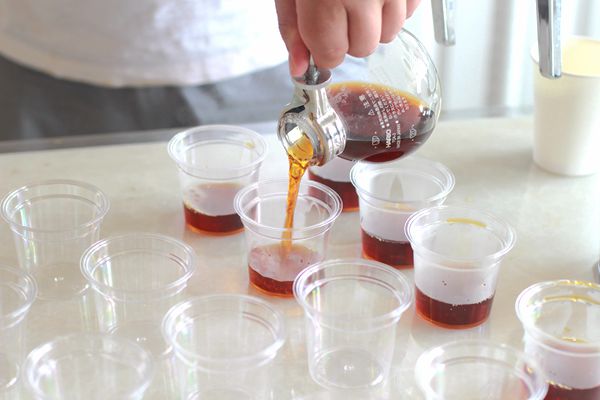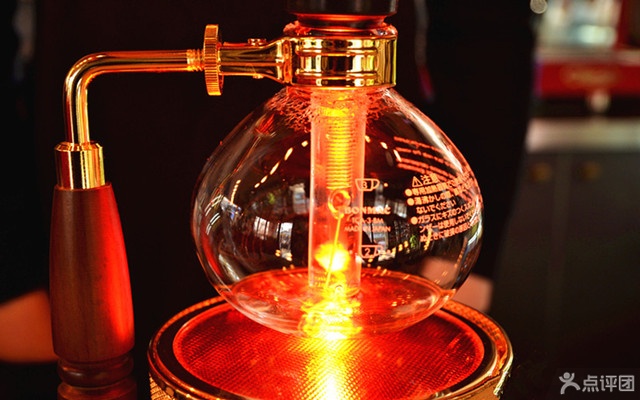Introduction to the methods of coffee quality evaluation: the basic methods of coffee quality evaluation are explained in detail.
Pre-product preparation:
1, before tasting coffee, it is best not to eat exciting food, such as garlic, pepper, persimmon, so as not to paralyze the taste buds and affect the sense of taste. Wash your hands and make sure there is no residual aroma of skin care products on your hands, so as not to confuse the aroma of coffee.
2. Prepare a glass of ice water, take a sip to awaken the taste buds before tasting coffee, and gargle before tasting different coffees.
Tasting method and process:
Coffee taste is mainly evaluated by fragrance (dry aroma, aroma of coffee powder), aroma (wet aroma, aroma of extracted coffee), acidity (acidity), bitterness (bitterness), sweetness (sweetness), body (mellowness), cleaness (purity), balance (balance) and aftertaste (afterrhyme).
Tasting process:
Taste the aroma of coffee with a sense of smell
1. Fragrance put the coffee powder in front of the nose on the one hand and cover the space between the nose and the coffee powder on the other to avoid the interference of miscellaneous odors in the air and feel the aroma of the coffee powder. Common aromas are floral (jasmine, lily), fruity (strawberry, pineapple, orange, lemon, etc.), dried fruit (chestnut, peanut, walnut, almond, etc.), grass, wood, bad aroma including soil, bad oil, rubber, etc.
2. Aroma put the coffee cup in front of his nose to feel the aroma of coffee. At this time, the aroma smelled in the coffee powder will become more vivid, such as flower, fruit, dried fruit, chocolate, caramel, honey, turpentine, bad aroma including soil, grass, iodine and so on.
Taste the acidity, sweetness, bitterness, mellowness, balance, purity and finish of coffee.
1. Take a quick sip of the coffee by sipping. The strength of the sip should ensure that the coffee liquid enters the mouth from the tip of the tongue and is in full contact with the whole tongue. Pay attention to feel the acidity, sweetness and bitterness of the coffee.
3. Keep sipping and holding the coffee in your mouth to feel its mellowness, just like the difference between drinking water and syrup. The thicker the coffee is, the more mellow it is. Continue to drink a few sips, carefully feel the acidity, bitterness, sweetness, generally high purity coffee will not appear extremely bitter, extremely sour, astringent taste and other irritating taste, at the same time, the better the harmony of various flavors in the coffee, the higher the balance of the coffee.
4, stop drinking, close your mouth, you will feel the rich taste of coffee from the whole mouth to the nasal cavity, and there will be a constant return on the tongue. If you open your mouth gently, you will find that there is still the aroma and taste of coffee in your mouth. This is Yuyun. The better the coffee, the more refreshing, strong and long-lasting, while the bad coffee is weak and often mixed with bitterness and other miscellaneous flavors.
Source:
The blog of the world of coffee with two bottles of water
Important Notice :
前街咖啡 FrontStreet Coffee has moved to new addredd:
FrontStreet Coffee Address: 315,Donghua East Road,GuangZhou
Tel:020 38364473
- Prev

Introduction to coffee quality: SCAA professional coffee cup evaluation system of American boutique coffee association
As one of the most authoritative professional coffee institutions in the world, the professional coffee cup evaluation system established by SCAA is used as a collection of methods, processes and standards for coffee quality evaluation. Although most cafes in China are not suitable to use this method for cup evaluation, some methods and details in the process may be helpful for us to understand the taste of coffee.
- Next

Introduction of coffee brewing method: historical reason of siphon pot and detailed introduction of brewing method
The first section of the history of the siphon pot The history of syphon: the siphon pot (Syphon), commonly known as "glass ball" or "siphon", is a simple and easy-to-use method of coffee brewing, and it is also one of the most popular coffee brewing methods in cafes. Although the siphon kettle has the nickname of "plug wind type", it has nothing to do with the siphon principle, but uses water to heat and produce water vapor, which causes hot expansion and cold contraction.
Related
- What is the meaning of lactic acid fermentation with coffee bean treatment?
- How to judge the state of foam by sound?
- How does the latte pull out the unicorn pattern? Come to get for a little trick to improve the flower pull!
- Will flower pulling affect the taste of the latte?
- Do you know the history of coffee?
- The difference between honey treatment and sun washing what is raisin honey treatment?
- What kind of milk can a novice use to make coffee foam to keep the foam longer? The correct method and skills of milking tutorial sharing
- Why do washed coffee beans taste sour? Flavor characteristics of washed Coffee
- Introduction to the skill of how to practice the size and height of water injection around the circle of hand-brewed coffee
- How do beginners practice coffee flower drawing from scratch?

